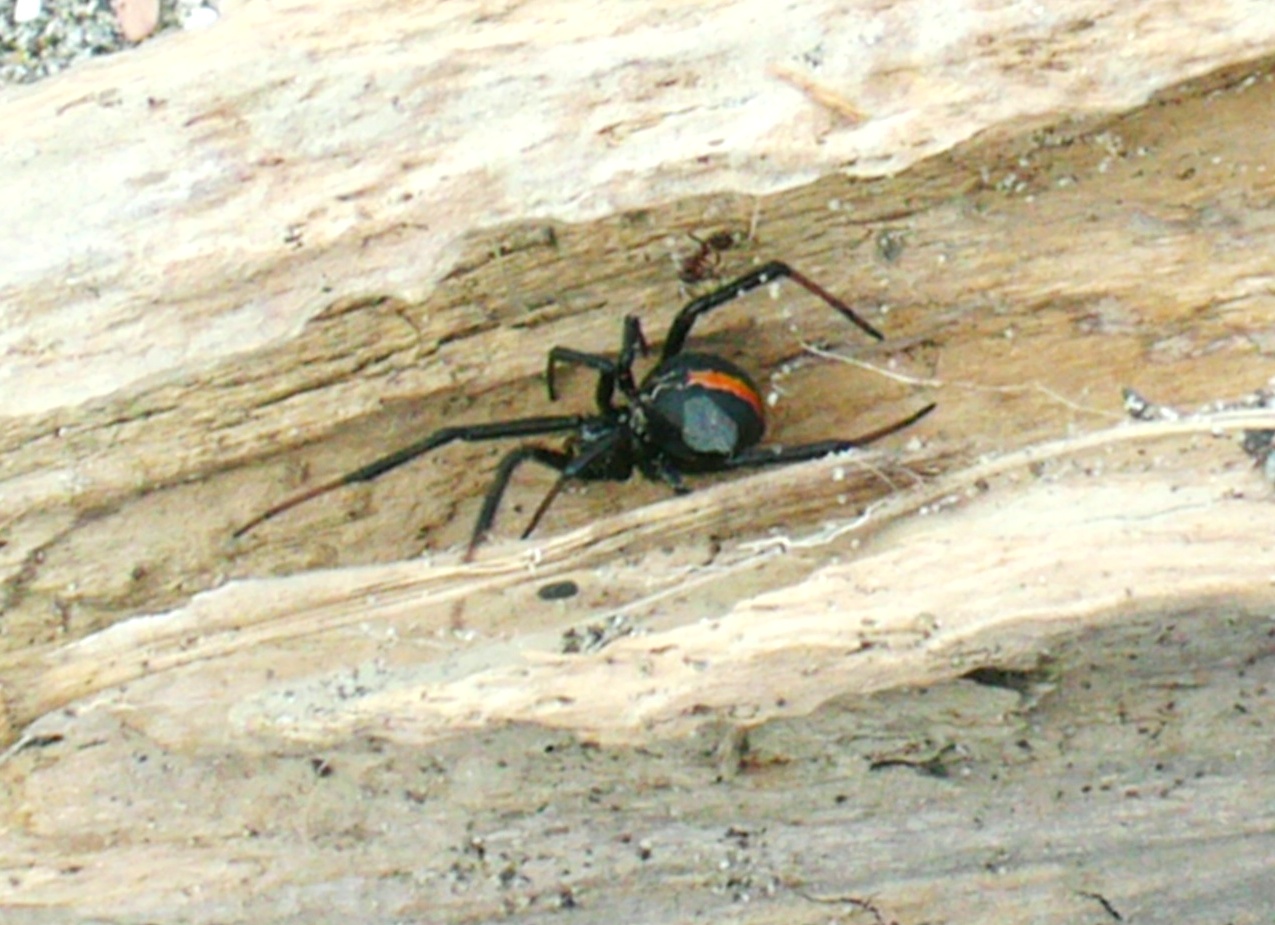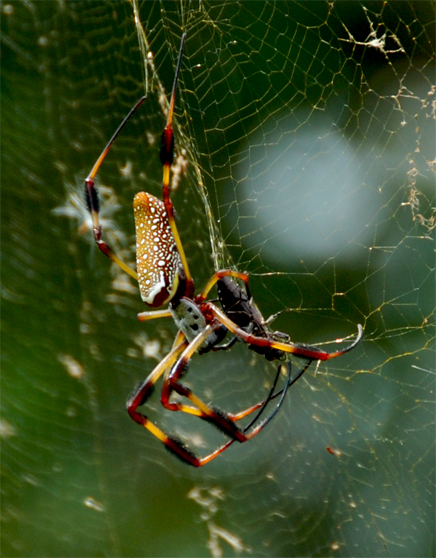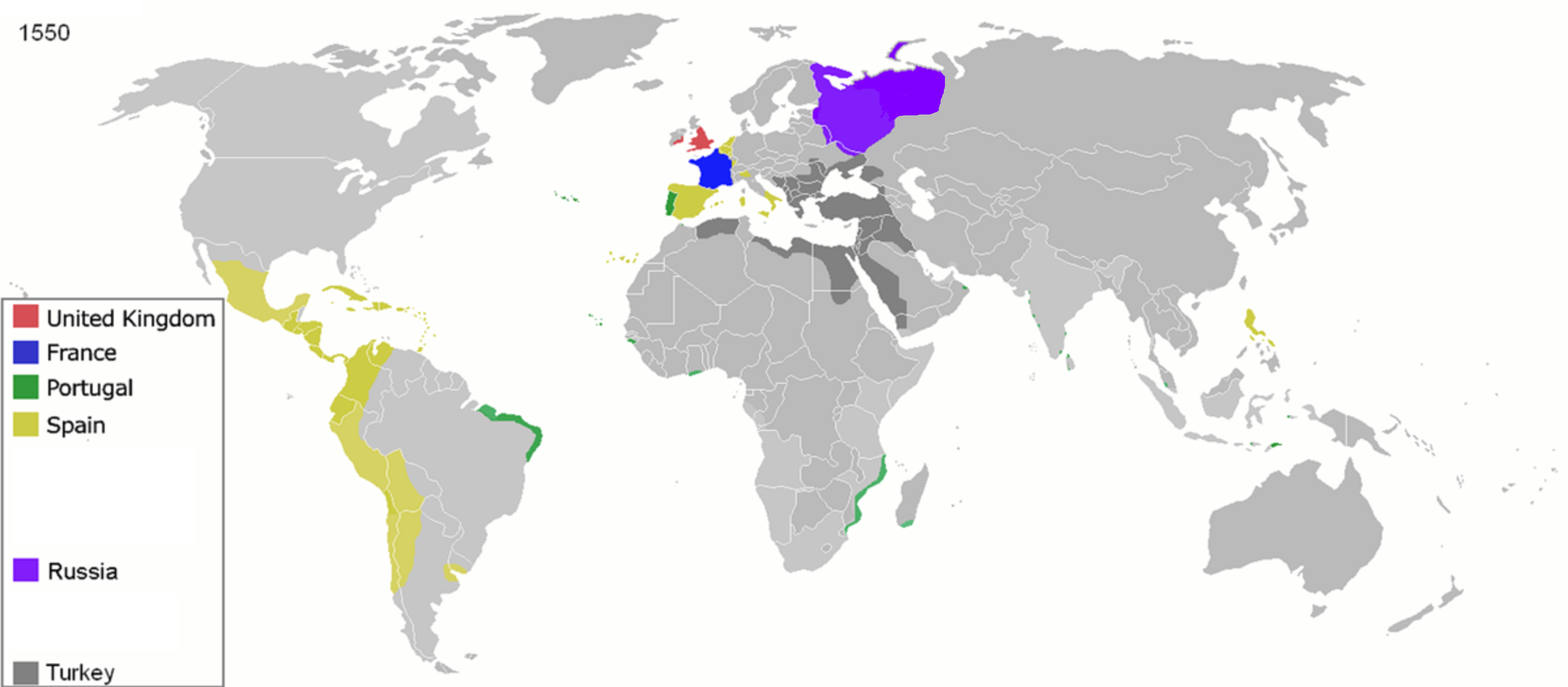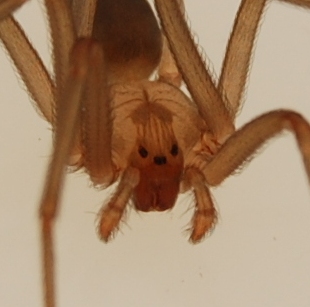|
White-tailed Spider
White-tailed spiders are spiders native to southern and eastern Australia, with the name referring to the whitish tips at the end of their abdomens. The body size is up to 18 mm, with a leg-span of 28 mm. Common species are ''Lampona cylindrata'' and ''Lampona murina''. Both these species have been introduced species, introduced into New Zealand. White-tailed spiders are vagrant hunters that seek out and envenom prey rather than spinning a web to capture it; their preferred prey is other spiders. They are reported to bite humans, with effects including a red mark, and local itchiness, swelling and pain. On rare occasions, bites can cause nausea, vomiting, malaise or headache. Although ulcer (dermatology), ulcers and necrosis have been attributed to the bites, a scientific study by Isbister and Michael R. Gray, Gray (2003) showed they had other causes, mostly infections. A study of 130 white-tailed spider bites found no necrotic ulcers or confirmed infections. Taxono ... [...More Info...] [...Related Items...] OR: [Wikipedia] [Google] [Baidu] |
Ludwig Carl Christian Koch
Ludwig Carl Christian Koch (8 November 1825 – 1 November 1908) was a German entomologist and arachnologist. He was born in Regensburg, Germany, and died in Nuremberg, Germany. He studied in Nuremberg, initially law, but then turned to medicine and science. From 1850, he practiced as a physician in the Wöhrd district of Nuremberg. He is considered among the four most influential scientists on insects and spiders in the second half of the 19th century. He wrote numerous works on the arachinoids of Europe, Siberia, and Australia. His work earned him worldwide reputation as "Spider Koch". Sometimes confused with his father Carl Ludwig Koch (1778–1857), another famous arachnologist, his name is abbreviated L.Koch on species descriptions; his father's name is abbreviated C.L.Koch Pierre Bonnet. ''Bibliographia araneorum,'' (1945) Les frères Doularoude (Toulouse). Works ''Die Arachniden Australiens'' (1871-1883), his major work on Australian spiders, was completed by Eugen von ... [...More Info...] [...Related Items...] OR: [Wikipedia] [Google] [Baidu] |
Black House Spider
The black house spider or common black spider (''Badumna insignis'') is a common species of cribellate Australian spider, introduced to New Zealand and Japan. A closely related species, '' Badumna longinqua'', the grey house spider, has a similar distribution, but has also been introduced to the Americas. Ludwig Carl Christian Koch described ''Badumna insignis'' in 1872. Description ''B. insignis'' is a dark, robust spider. The female grows up to 18 mm, with a 30 mm leg span. As with most spiders, the males are smaller (10 mm) and have longer legs in relation to their body size. In both sexes, the carapace and legs are dark brown to black, and the abdomen is charcoal grey with a dorsal pattern of light markings (sometimes indistinct) and a dense covering of fine, velvety hair. ''B. longinqua'' is slightly smaller (14 mm) with a greyish carapace and black-brown legs. Habits, mating, and reproduction The web of ''B. insignis'' is a messy-looking construct of irre ... [...More Info...] [...Related Items...] OR: [Wikipedia] [Google] [Baidu] |
Spiders Of New Zealand
New Zealand has an estimated 2,000 species of spiders, with over 1,100 species described scientifically. Over 90 per cent are endemism, endemic, with the approximately 70 non-endemic species being introduced through association with humans or by natural processes such as Ballooning (spider), ballooning. The New Zealand spider with the largest leg span is the Nelson cave spider (''Spelungula cavernicola''), with a leg span of up to and a body length. The flat huntsman spider (''Delena cancerides''), called the Avondale spider in New Zealand, was accidentally introduced from Australia in the early 1920s, possibly in shipments of hardwood logs used for railway sleepers. It is considered harmless to humans, and individuals have been collected for use in at least two films. Very few New Zealand spiders have bites that can cause significant injury to humans, and of these, only one – the katipō – is endemic. Katipō bites have been known to cause systemic effects, such as hype ... [...More Info...] [...Related Items...] OR: [Wikipedia] [Google] [Baidu] |
Spiders Of Australia
Australia has a number of highly venomous spiders, including the Sydney funnel-web spider, its relatives in the family Hexathelidae, and the redback spider, whose bites can be extremely painful and have historically been linked with deaths in medical records. Most Australian spiders do not have venom that is considered to be dangerously toxic. No deaths caused by spider bites in Australia have been substantiated by a coronial inquest since 1979. There are sensationalised news reports regarding Australian spiders that fail to cite evidence. ''A Field Guide to Spiders of Australia'' published by CSIRO Publishing in 2017 featuring around 836 species illustrated with photographs of live animals, around 381 genera and 78 families, introduced significant updates to taxonomy from Ramirez, Wheeler and Dmitrov. Estimates put the total number of Australian spider species at about 10,000. Only around 3,600 have been described. Little information is known about many undiscovered species. New ... [...More Info...] [...Related Items...] OR: [Wikipedia] [Google] [Baidu] |
Lamponidae
Lamponidae is a family of spiders first described by Eugène Simon in 1893. It contains about 200 described species in 23 genera, most of which are endemic to Australia, with the genus ''Centrocalia'' endemic to New Caledonia, and two ''Lampona'' species (''L. cylindrata'', ''L. murina'') also occurring in New Zealand where they are commonly known as ' white-tailed spiders'. ''Lampona papua'' is endemic to New Guinea New Guinea (; Hiri Motu: ''Niu Gini''; , fossilized , also known as Papua or historically ) is the List of islands by area, world's second-largest island, with an area of . Located in Melanesia in the southwestern Pacific Ocean, the island is ..., where two otherwise Australian species (''Centrothele mutica'', ''Lamponova wau'') also occur. Genera The categorization into subfamilies follows Joel Hallan'Biology Catalog * Centrothelinae Platnick, 2000 :* '' Asadipus'' Simon, 1897 (Australia) :* '' Bigenditia'' Platnick, 2000 (Australia) :* '' Centrocalia'' Plat ... [...More Info...] [...Related Items...] OR: [Wikipedia] [Google] [Baidu] |
Landcare Research
Landcare may refer to: * Australian Landcare Council, a former Australian government body, superseded by the National Landcare Advisory Committee * Landcare Australia, an Australian community not-for-profit organisation, involving local volunteers repairing the natural environment *The landcare movement in Australia, begun by farmers in the 1960s * Manaaki Whenua – Landcare Research, a New Zealand Crown Research Institute whose focus of research is the environment, biodiversity, and sustainability. * National Landcare Program, Australian Government program providing funding for improving land management practices {{Disambig ... [...More Info...] [...Related Items...] OR: [Wikipedia] [Google] [Baidu] |
Australian Museum
The Australian Museum, originally known as the Colonial Museum or Sydney Museum. is a heritage-listed museum at 1 William Street, Sydney, William Street, Sydney central business district, Sydney CBD, New South Wales. It is the oldest natural history museum in Australia and the fifth oldest natural history museum in the world, with an international reputation in the fields of natural history and anthropology. It was first conceived and developed along the contemporary European model of an encyclopedic warehouse of cultural and natural history, and features collections of vertebrate and invertebrate zoology, as well as mineralogy, palaeontology and anthropology. The scientific stature of the museum was established under the curatorship of scientist Gerard Krefft in the 1860s. Apart from permanent displays in its galleries, permanent and temporary exhibitions, the museum also undertakes research and is involved in community programs. Since 1973 it has operated the Lizard Island ... [...More Info...] [...Related Items...] OR: [Wikipedia] [Google] [Baidu] |
Arachnologist
Arachnology is the scientific study of arachnids, which comprise spiders and related invertebrates such as scorpions, pseudoscorpions, harvestmen, ticks, and mites. Those who study spiders and other arachnids are arachnologists. More narrowly, the study of spiders alone ( order Araneae) is known as araneology. The word "arachnology" derives from the Ancient Greek words , ''arachnē'', "spider"; and , ''-logia'', "the study of a particular subject". The greek word for "spider" itself refers to Arachne, the female protagonist of an ancient tale of the Greek Mythology. Arachnology as a science Arachnologists are primarily responsible for classifying arachnids and studying aspects of their biology. In the popular imagination, they are sometimes referred to as spider experts. Disciplines within arachnology include naming species and determining their evolutionary relationships to one another (taxonomy and systematics), studying how they interact with other members of their spec ... [...More Info...] [...Related Items...] OR: [Wikipedia] [Google] [Baidu] |
Colonisation Of Australia
475px, Map of the year each country achieved List of sovereign states by date of formation, independence. Colonization (British English: colonisation) is a process of establishing occupation of or control over foreign territories or peoples for the purpose of cultivation, exploitation, trade and possibly settlement, setting up coloniality and often colonies. Colonization is commonly pursued and maintained by, but distinct from, imperialism, mercantilism, or colonialism. The term "colonization" is sometimes used synonymously with the word "settling", as with colonisation in biology. Settler colonialism is a type of colonization structured and enforced by the settlers directly, while their or their ancestors' metropolitan country ('' metropole'') maintains a connection or control through the settler's activities. In settler colonization, a minority group rules either through the assimilation or oppression of the existing inhabitants, or by establishing itself as the demogr ... [...More Info...] [...Related Items...] OR: [Wikipedia] [Google] [Baidu] |
New Zealand Medical Journal
''The New Zealand Medical Journal (NZMJ)'' is a peer-reviewed medical journal. It is owned by the Pasifika Medical Association Group (PMAG) and was formerly the official journal of the New Zealand Medical Association. Description The ''NZMJ'' was established in September 1887 by the New Zealand Branch of the British Medical Association. The editor-in-chief is Frank Frizelle. The journal is a member of the International Committee of Medical Journal Editors. It has been published online since July 2002, was a key asset of the New Zealand Medical Association (NZMA) up until the 8 July 2022, when the parent body, NZMA services, was put into liquidation. It is now owned by the Pasifika Medical Association Group (PMAG). The journal publishes editorials, original articles, case reports, viewpoint, and letters. There is a four-tier system of subscriber access, with articles older than six months and abstracts being open access. Editors * Walter Fell (1855–1932), 1906–1911 * Frank F ... [...More Info...] [...Related Items...] OR: [Wikipedia] [Google] [Baidu] |
Medical Journal Of Australia
The ''Medical Journal of Australia'' (MJA) is a peer-reviewed medical journal published 22 times a year. It is the official journal of the Australian Medical Association, published by Wiley (publisher), Wiley on behalf of the Australasian Medical Publishing Company. The journal publishes editorials, original research, guideline summaries, narrative reviews, perspectives, medical education, reflections, and letters. The full text of every issue since January 2002 is available online. History Early origins The journal was established in 1856, when communication between Australian states and other English-speaking nations entailed long delays. The journal was both a platform for Australian medical research, as well as educational reviews summarising research done overseas. It has since been renamed several times: *''Australian Medical Journal'' (1856–1895) *''Intercolonial Quarterly Journal of Medicine and Surgery'' (1895–1896) *''Intercolonial Medical Journal of Australasia'' (1 ... [...More Info...] [...Related Items...] OR: [Wikipedia] [Google] [Baidu] |
Recluse Spider
The recluse spiders (''Loxosceles'' (), also known as brown spiders, fiddle-backs, violin spiders, and reapers, are a genus of spiders that were first described by R. T. Lowe in 1832. They are venomous spiders known for their bite, which sometimes produces a characteristic set of symptoms known as loxoscelism. Recluse spiders are now identified as members of the family Sicariidae, having formerly been placed in their own family, the Loxoscelidae. Although recluse spiders are feared, they are usually not aggressive. Relation with other spiders Sicariidae are of the superfamily Scytodoidea. Other families in the Scytodoidea include Drymusidae, Scytodidae, and Periegopidae. Habitat and appearance ''Loxosceles'' is distributed nearly worldwide in warmer areas. All have six eyes arranged in three groups of two (dyads) and some are brownish with a darker brown characteristic violin marking on the cephalothorax. However, the "violin marking" cannot be used as a reliable way t ... [...More Info...] [...Related Items...] OR: [Wikipedia] [Google] [Baidu] |





